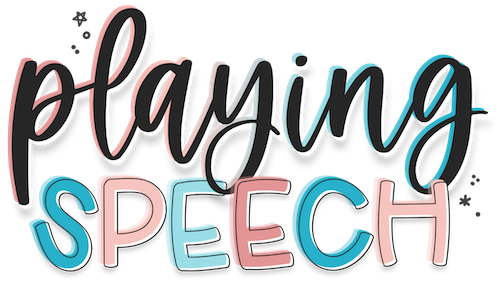My Top 5 Must-Have Resources for Treating Speech Sound Disorders in Preschoolers.
Right now, my entire caseload consists of preschool-aged children with speech sound disorders (SSD). And, they say write what you know, right? So, I thought it would be a good idea to compile a list of my top 5 favorite, most used resources for treating SSD in this population. Let’s get right to it.
I don’t know what it is about these cards, but they are magic. I use them with motor speech clients as well as phono kiddos. The pictures are so engaging, and whatever it is about them - they really resonate with the kids! Like, I’ve had little ones who I’m thinking, “no way is this gonna work.” And then BAM! I whip out these visual cues and the child is stimulable for speech sounds I never thought we were going to get! I also like how you can use multiple cards at once to link sounds together and build words. For example, I will use the “uh” and “s” cards to work on “us.”
P.S. I am not getting any kickback from this. Jennie Bjorem doesn’t even know I’m writing this, ha. Check out the cards here.
I own the first edition, but no matter. I’m sure the second edition is even more awesome. This book is GOLD when it comes to working with children with SSD. It contains TWENTY-ONE different interventions for speech sound disorders. I love how it talks about the research behind each intervention, presents case studies, and really walks you step-by-step through how to implement each approach! I reference this text ALL the time. Check it out here.
These happen to be minimal pair cards shown. But I use them for other interventions as well; I just pull out the stimuli words that are appropriate for whatever approach I am using. I like this set (full disclosure: I created them) because the pictures are large and colorful, and the print is also large and simple. Nothing distracting. What I love about a great set of picture cards is that you can do so much with them: stack mini erasers, put magnetic chips on top, hide them around the room and go on a hunt, etc. You can also just use them for drill work between quick turn-taking activities. I use at least one set of these every day. Not an exaggeration. I’m all about simple and versatile and these fit the bill. I’ll link them here.
I use these for EVERYTHING! They are Boom Cards with movable pieces (all with the child’s target sound) that you can use to create picture scenes. The kids love that the scenes can get silly - super motivating! And you can use them again and again because they are so open-ended. With these Boom Cards, I know the child will definitely have plenty of opportunities to use the target sound when I am working at the sentence or conversational level. I also like to use them to check for generalization and carryover if I am using an approach like Cycles or Minimal Pairs. AND you can use them to target language concepts as well - but that’s for another blog post.
One buyer said she uses them to collect baseline data!! I thought that was such a great idea. They are linked here.
Plastic Easter Eggs
Regular or themed shapes! They are so versatile and children LOVE the surprise element. I put mini objects inside that correspond with a target sound or syllable shape. You can even put smaller picture cards inside. The child can simply open the egg as the activity, or you can hunt for them. I also put them in sensory bins and have clients dig them out. Even my most reluctant little ones are so motivated to open the egg, and they always, always, always want to tell you “what they got.”
I’m not going to link these because I suggest going to a dollar store around Easter time and stocking up! They always have so many cute themes for super cheap!
So there you have it. These are my top 5 must-have resources for treating SSDs in the preschool population. Do you use any of these in your therapy sessions? Leave me a comment below and let me know!







